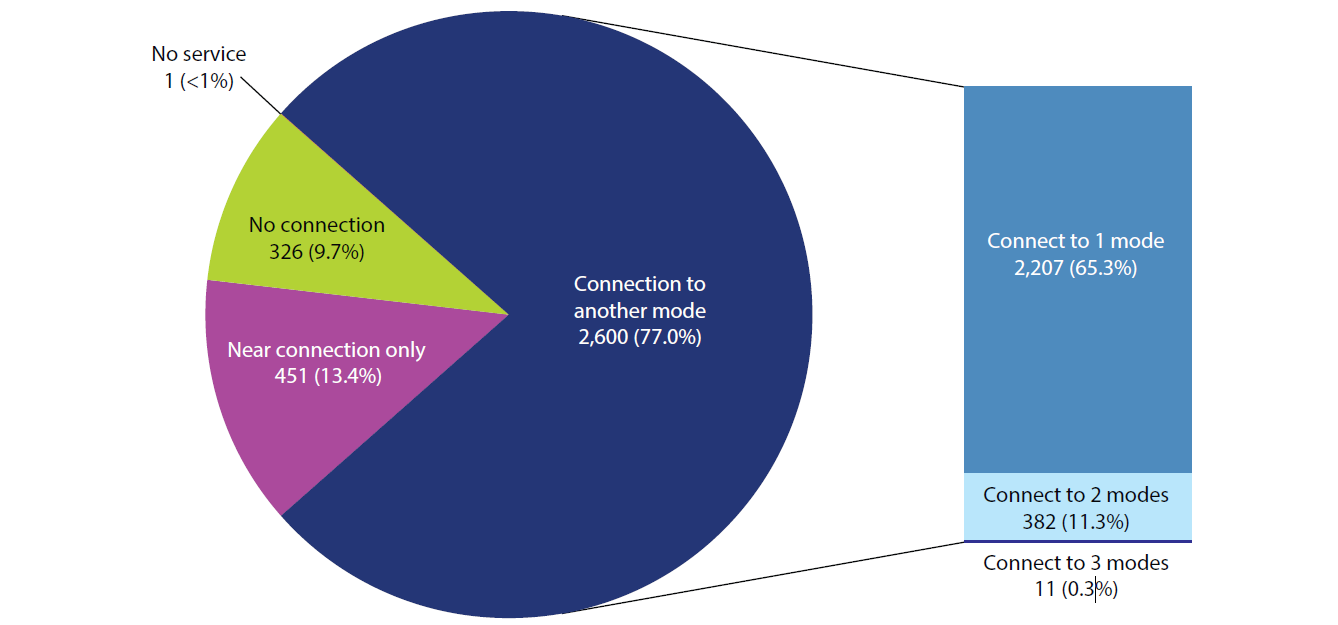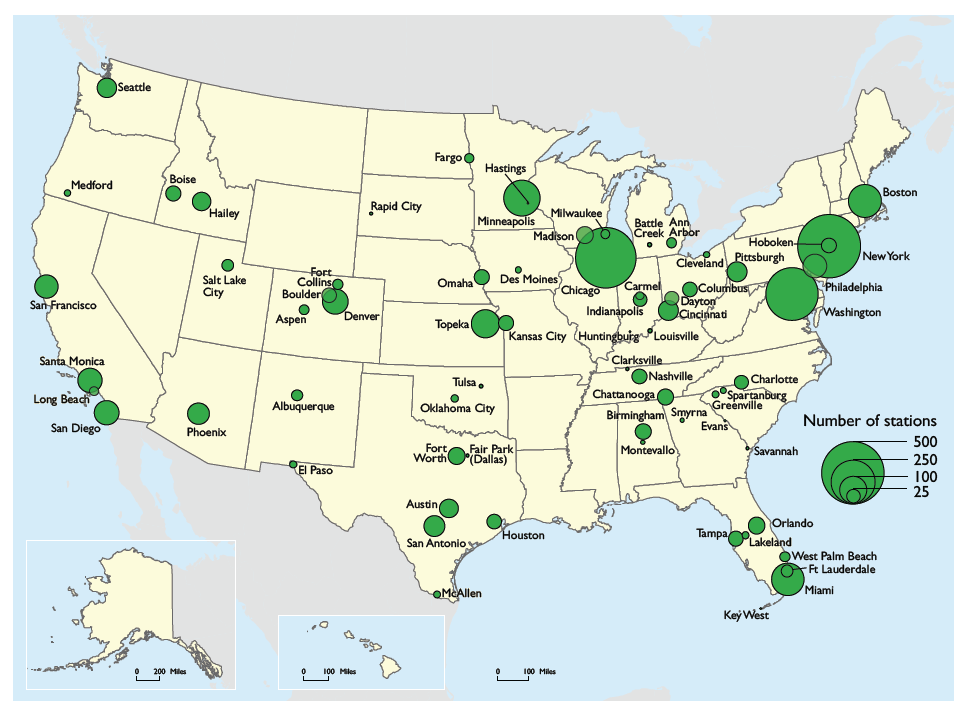Bike-Share Stations in the U.S
The U.S. has a total of 3,378 bike share stations in 104 cities, according to a new report Bike-Share Stations in the U.S. issued today by the U.S. Department of Transportation’s Bureau of Transportation Statistics. These numbers are as of April 2016.
Figure 1. Bike-Share Connectivity to Scheduled Public Transportation

Source: U.S. Department of Transportation, Bureau of Transportation Statistics, Intermodal Passenger Connectivity Database (as of April 2016)
The BTS report shows that of 3,378 bike-share stations, 77.0 percent (2,600 of 3,378) are located within one block of a scheduled public transportation mode (Figure 1). These connections extend the transportation network by offering a means for reaching places with scheduled public transportation, such as heavy rail stations and local bus stops, and a means for reaching destinations not served by scheduled public transportation.
Transit bus is the most typical connection, with 74.9 percent (2,531) of bike-share stations located a block or less from a transit bus stop.
In addition to the bike-share stations located within one block of public transportation, an additional 451 offer near connectivity only to facilities with one or more scheduled transportation. At these stations, another mode stops more than a block, but less than two blocks, away.
BTS’ Intermodal Passenger Connectivity Database (IPCD) provides the locations of U.S. bike-share stations and their connectivity levels to scheduled public passenger transportation modes, such as air and intercity and transit modes (bus, ferry, and rail). A bicycle (bike) sharing system is a service where bikes are available for shared use to individuals on a short-term basis.
Figure 2. Cities With Bike-Share Systems

Source: U.S. Department of Transportation, Bureau of Transportation Statistics, Intermodal Passenger Connectivity Database (as of April 2016)
Bike-share generally uses new mobile communications technologies to offer a transportation option. In most cases, users pay a fee to grab a bike at any outdoor docking location in the system and then return the bike within a specified time limit to any outdoor docking location within that system.
A total of 70 bike-share systems operate these stations. Of the 70 bike-share systems, 13 operate across 1 or more cities within a metropolitan area. Capital Bikeshare, for example, serves 11 cities in the Washington DC-Arlington-Alexandria Metropolitan Area, and Cincinnati Red Bike serves four cities in the Cincinnati Metropolitan Area (Figure 2).
See Bike-Share Stations in the U.S. for more details about bike-share stations’ connections to public transportation. The IPCD is a nationwide data table of 7,000 rail, air, bus and ferry passenger transportation terminals. The objective of the IPCD is to provide data to use in measuring the degree of intermodal connectivity in the passenger transportation system.
